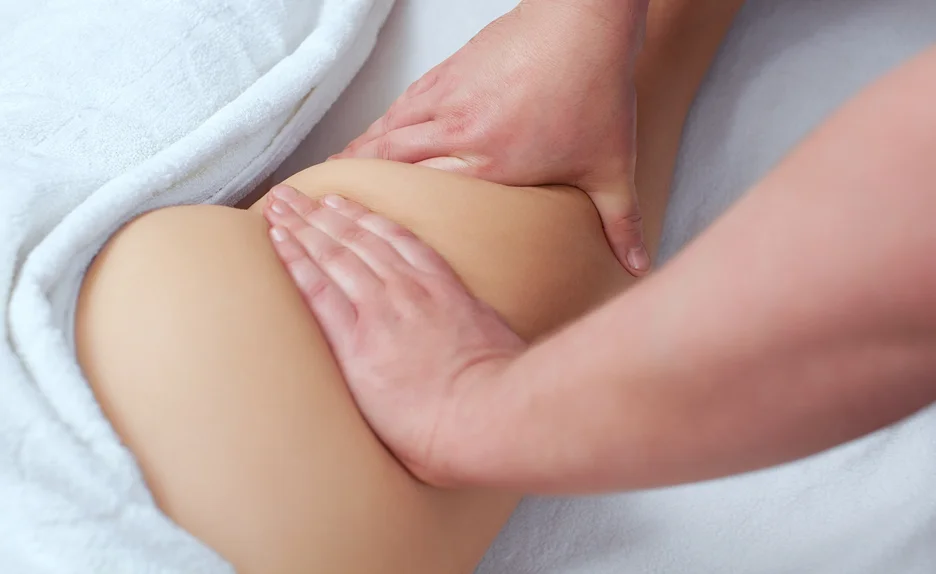Massage Techniques and Therapies for Alleviating Sciatic Pain
That searing pain shooting down your leg? It could be sciatica. This common condition strikes when irritation flares up in the sciatic nerve running from your lower back to your feet. If every step feels like stepping on hot coals, you’re not alone. Massage offers sweet relief for this fiery pain and can get to the root causes like muscle knots and spine issues.
In this guide, we’ll explore the massage techniques that can calm your sciatica, from gentle stretches to targeted trigger point therapy. You’ll discover drug-free ways to find lasting relief beyond pills and put the spring back in your step. With the right massage approach, you can say goodbye to the shooting, burning pain of sciatica.
The Importance of Understanding Sciatica
The sciatic nerve is the largest and longest nerve in the human body, originating in the lower back and extending down each leg to the foot. It controls many of the muscles responsible for flexing the knee and moving the calves and feet. Any sort of nerve compression can trigger sciatic pain.
A common cause of sciatica is a herniated or slipped disc pressing on the nerve roots as they exit the spinal cord. Degenerative disc disease and spinal stenosis (narrowing of the spinal canal) can also irritate the nerve. Outside the spine, tension or spasms in the piriformis muscle can constrict the nerve as it passes through the buttocks. Injury, strained muscles, fibrotic scar tissue and even excess weight placing pressure on the pelvis can all contribute to sciatica.
Symptoms of sciatica depend on where the nerve is impacted but may include:
- Pain in the lower back, buttocks, thighs or legs
- Numbness or muscle weakness
- Tingling or burning sensations
- Difficulty standing or moving the leg
- Constant pain or pain that intensifies when sitting, sneezing, laughing or exercising
For some, sciatica pain is minimal and intermittent, a nuisance but not debilitating. For others, however, it is severe and chronic, greatly diminishing their mobility and quality of life. Seeking an accurate diagnosis is key, as the presence of any neurological symptoms—including numbness, tingling, or weakness in the leg or foot—warrants medical oversight to rule out serious conditions.
While sciatica sometimes resolves on its own, effective treatment tailored to the cause can help manage chronic and severe cases. Various massage techniques may provide relief when incorporated into a comprehensive treatment plan.
Massage Techniques for Sciatica

1. Deep Tissue Massage
Deep tissue massage focuses on realigning deeper layers of muscle and connective tissues. It applies firm pressure and slow strokes to target chronic knots and tightness. For those with sciatica, deep tissue techniques can provide much-needed relief from pain and muscle spasms.
This style of massage targets the inner layers of fascia, tendons and muscles closest to the troubled sciatic nerve. The direct pressure loosens adhesive tissues, breaks up fibrotic scar tissues, and releases constricted nerve pathways. It also increases blood circulation to improve nerve function. For areas numbed by sciatica, the deep stimulation helps reactivate and reconnect nerve endings within muscles.
Due to the intensity of the techniques, deep tissue massage is often recommended for severe or chronic sciatica that has not responded to other conservative treatments. It can be useful prior to physical therapy in order to decrease inflammation and muscle restrictions that may hinder mobility exercises. Since it focuses on reducing nerve impingement at the source, deep tissue’s benefits may endure beyond the massage session.
2. Swedish Massage
Swedish massage utilizes gentler techniques to address the superficial muscles impacted by sciatic pain. It incorporates gliding, kneading, tapping, shaking and cross-fiber movements to relax the body. Though lighter in pressure, Swedish massage still enhances circulation and decreases muscle tightness.
This style of massage therapists often begin by applying soothing, relaxing strokes to warm up the tissues before addressing areas of tension, trigger points or adhesions. The increased blood flow nourishes nerve tissues with oxygen and nutrients for healing, while also flushing out inflammation. Slow, fluid techniques gently stretch and lengthen rigid muscles, giving compressed nerves more room to move freely.
Since Swedish massage does not target the deepest tissues, the effects are often temporary, providing short-term pain relief. However, incorporating Swedish techniques into a sciatica treatment plan can complement deeper modalities by encouraging relaxation, reducing spasms, improving flexibility and preparing the body to receive deeper work. It is also suitable for those in acute sciatica pain who require a gentler approach.
3. Trigger Point Massage
Within muscles affected by sciatica, dense knots called trigger points can form and cause localized pain that radiates outward in predictable patterns. Compressing the sciatic nerve, trigger points may manifest as referred pain along the path of the nerve, imitating classic sciatica symptoms.
Trigger point therapy applies direct, focused pressure to manually release these hyperirritable nodules within muscles and connective tissues. This helps relieve constricted nerves as well as the associated referred pain and muscle dysfunction. Massage therapists utilize tools like fingers, elbows or trigger point release balls to apply pinpointed pressure to each tender knot for several seconds, allowing the tissues to release.
Identifying and addressing trigger points in the lower back, piriformis, glutes, hamstrings and calves can provide significant pain relief for sciatica sufferers. Layers of muscle containing multiple trigger points often underlie chronic nerve entrapment. Releasing them helps take pressure off irritated nerve tissues. Regular trigger point therapy can help prevent sciatic flare-ups by maintaining relaxed, flexible muscles.
4. Self-Massage
While professional massage offers immense benefits, simple self-massage techniques allow sciatica sufferers to take an active role in managing their pain on a daily basis. Using massage tools or simply fingers and hands, patients can access and work on trigger points in hard-to-reach areas at home between professional treatments.
Self-massage tools like foam rollers, massage balls and massage sticks enable the user to apply pressure and mimic kneading movements along the spine, buttocks and legs. These tools can be utilized while lying, sitting or standing for short periods each day. Handheld massage guns offer forceful vibration to relax muscles and improve circulation.
Tennis or golf balls are inexpensive tools that can be placed under the body, against a wall or on the floor to provide direct pressure to trigger points. Patients can also use the heels, elbows or fingertips to massage tense areas in the lower back and legs as needed for pain relief. However, it is important not to overdo self-massage and avoid techniques that worsen symptoms. Checking in with a massage therapist can ensure proper technique.
Other Effective Massage Therapies for Sciatica
Though Swedish and deep tissue represent two ends of the pressure spectrum, many other massage modalities offer relief for sciatica:
- Myofascial release uses gentle pressure across the connective tissue surrounding muscles to improve mobility and loosen adhesions.
- Neuromuscular massage combines trigger point therapy with gentle stretches to release constricted nerves.
- Hot stone massage uses warm stones placed along the spine, hips and legs to impart deep heating muscle relaxation.
- Sports massage employs a range of motion stretches and compression techniques tailored to an active lifestyle.
Qualified massage therapists can recommend the ideal approach based on injury history, severity of symptoms, comfort level and goals. A treatment plan often incorporates multiple massage modalities depending on the needs of the individual. Consistency is key for lasting nerve pain relief.
Precautions and Considerations
While often beneficial, massage therapy is not universally appropriate for sciatica. Severe or sudden symptoms require prompt medical evaluation. Massage should be avoided in cases of:
- Undiagnosed sciatica-like pain without evaluation
- Disc herniation with progressive neurological changes
- Spinal instability or fractures
- Bleeding disorders or use of blood thinners
- Pregnancy, unless trained in prenatal massage
It is also vital to communicate all symptoms and medication use to massage therapists. In some cases, massage techniques require adjustment to safely work around the injury and avoid exacerbating inflammation. Ongoing communication ensures the treatment supports healing.
Collaborating with healthcare providers is key. Massage therapists can work together with physical therapists, sports medicine specialists, and doctors to determine safe, beneficial techniques and treatment frequency for each patient’s needs and recovery stage.
The Broader Benefits of Massage Therapy for Health
Given massage’s positive effects on muscle pain, joint mobility, mood and stress resilience, it can support overall wellness and quality of life. This makes it a beneficial supplement to treatment plans for various chronic health conditions – from fibromyalgia to arthritis, headaches, TMJ dysfunction and more.
Specific benefits include:
- Improves circulation and blood flow to bring oxygen and nutrients to tissues
- Increases range of motion and flexibility through stretching
- Stimulates the lymphatic system to flush metabolic waste from tissues
- Releases endorphins, the body’s natural pain-relieving hormones
- Reduces cortisol and stress hormone levels
Mentally and emotionally, massage therapy:
- Induces deep relaxation and lowered heart rate
- Decreases anxiety, depression, pain perception
- Improves sleep quality
- Elevates mood through increased serotonin and dopamine
Takeaway

For those suffering from the pain and mobility impairment of sciatica, massage therapy offers a promising drug-free treatment option. Through techniques like Swedish, deep tissue, trigger point and myofascial release, massage can provide both short-term symptom relief and promote long-term recovery.
It’s important to choose massage approaches that suit your unique needs and injury status under the guidance of healthcare providers. Consistency is key to achieve lasting relief. Along with professional massage, self-care techniques allow you to extend the benefits at home.
Beyond sciatica, exploring massage for general wellness is encouraged to manage stress, ease muscle tension, regain flexibility and improve quality of life. The positive effects on both mind and body make massage a worthwhile investment in your overall health.
Connect with the best massage therapists and healthcare providers on Kaly for personalized guidance in using massage therapy to overcome sciatic nerve pain and improve your health. There are dedicated experts available to address your questions and concerns through online consults, helping you determine if massage might be right for you.
